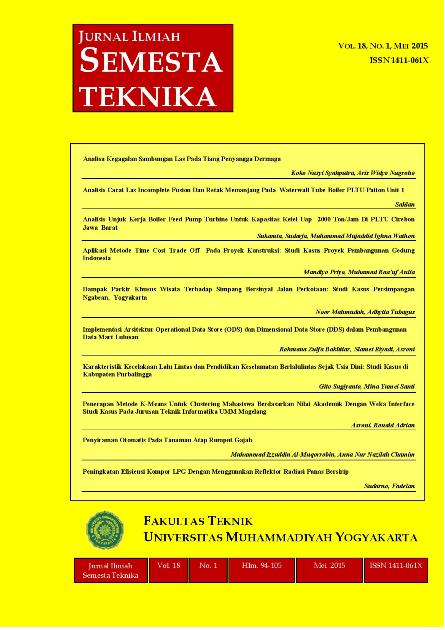Dampak Parkir Khusus Wisata Terhadap Simpang Bersinyal Jalan Perkotaan: Studi Kasus Persimpangan Ngabean, Yogyakarta
DOI:
https://doi.org/10.18196/st.v18i1.705Keywords:
urban street, intersection performance, tourism parking lotAbstract
The development of Special Region of Yogyakarta has been occuring rapidly due to this region is well known as student city and the primary tourism destination in Indonesia. One of the transportation problems related to the tourism activities is traffic conflict due to parking area of tourism bus in Ngabean, Yogyakarta City. Therefore it is needed to evaluate signalized junction around the parking area in order to reach the optimal performance. The study carried out among other by conducting field survey to the existing condition (performance) of signalized junction either in the weekend (Saturday) and weekday (Monday), especially by evaluating the degree of saturation (ds). The analysis results showed that the degree of saturation in the weekend is 0,89, which is higher than the allowed one (ds=0,85). Since the degree of saturation in the weekday is 0,76 so it is relatively good. The scenarios (model) applied to improve the overall junction performance are by estricting (prohibiting) left turning on red (LTOR) and by carrying out road widening. The final result obtained from the scenario (model) is the degree of saturation (ds) becomes lower than the allowed value (0,83<0,85) for all approaches in the signalized junction.
Downloads
Published
How to Cite
Issue
Section
License
Semesta Teknika is licensed under a Creative Commons Attribution 4.0 International License.
Authors who publish with this journal agree to the following terms:
- Authors retain copyright and grant the journal right of first publication with the work simultaneously licensed under a Creative Commons Attribution License that allows others to share the work with an acknowledgement of the work's authorship and initial publication in this journal.
- Authors are able to enter into separate, additional contractual arrangements for the non-exclusive distribution of the journal's published version of the work (e.g., post it to an institutional repository or publish it in a book), with an acknowledgement of its initial publication in this journal.
- Authors are permitted and encouraged to post their work online (e.g., in institutional repositories or on their website) prior to and during the submission process, as it can lead to productive exchanges, as well as earlier and greater citation of published work (See The Effect of Open Access).









